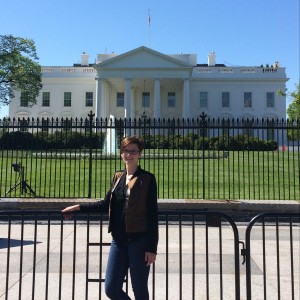September 13, 2016
The following post is part one of a seven-part series where JSG grad students reveal what they were up to over summer break. Enjoy!
 This summer has been a mishmash of geoscience experiences. Before it began, I was worried I wouldn’t have a successful summer since I didn’t have a formal summer long internship. I knew I would be supported as a research assistant, but that was basically all that was confirmed. Fortunately, my summer turned out to be extremely productive and beneficial. My goals at the beginning of the summer were to knock out a lot of my research since I switched projects in January and to get out of the office to get some sort of field experience. I spent the bulk of my summer working on my Master’s thesis, but I sprinkled other work throughout which made it diverse and extremely worthwhile. I even managed to get some vacation time in!
This summer has been a mishmash of geoscience experiences. Before it began, I was worried I wouldn’t have a successful summer since I didn’t have a formal summer long internship. I knew I would be supported as a research assistant, but that was basically all that was confirmed. Fortunately, my summer turned out to be extremely productive and beneficial. My goals at the beginning of the summer were to knock out a lot of my research since I switched projects in January and to get out of the office to get some sort of field experience. I spent the bulk of my summer working on my Master’s thesis, but I sprinkled other work throughout which made it diverse and extremely worthwhile. I even managed to get some vacation time in!
The first thing I participated in was actually before summer began. In April, I was given the opportunity to represent Texas geoscientists at the Congressional Visits Day in Washington, D.C. I, along with 15-20 fellow geoscientists from varying career levels and backgrounds, visited with members of Congress from our respective states for a few days to stress the need of continued funding for geoscience research at a national level.
Then after classes ended, I started the three week Marine Geology and Geophysics course offered through the Jackson School. The first and last week are class and laboratory work and the second week is field work deploying geophysical equipment in the Gulf of Mexico and taking sediment samples and cores.
I also volunteered for a week to assist IRIS and PASSCAL Instruments deploy 350 nodal sensors, 10 infrasound sensors in gradiometer and line arrays and 18 broadband seismometers in a Golay array in Enid, Oklahoma. I learned about this opportunity through my advisor, Jake Walter, and attended the community experiment with a UT post-doc, Chastity Aiken. During the field work, I got to meet about 60 other geophysicists of various backgrounds – students,post-docs and professors – from institutions around the country.
So, I worked steadily and made a good amount of progress on my thesis. Check! Going to D.C. wasn’t really field work, but I did get out of Austin and get exposure to a different side of geosciences. The MG&G course and IRIS installation gave me valuable experience working with new equipment and introduced me to new professors and researchers at UT. Check! I would say my first summer as a graduate student was pretty gneiss.